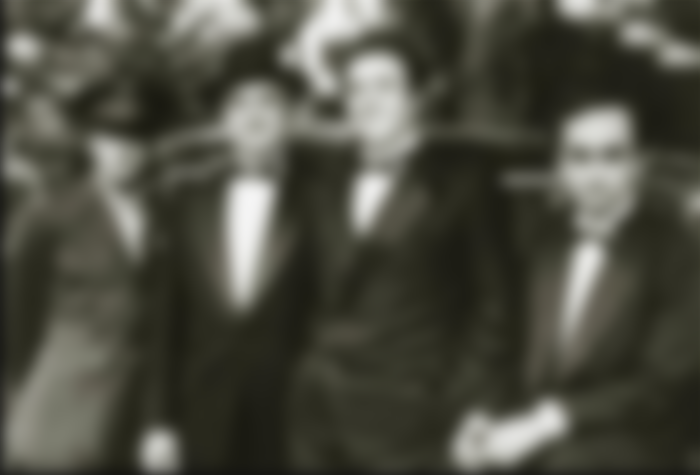
Simply - that something that should be found with the music of Mozart and Bach on a gold engraved plate of Voyager that would be sent into space for aliens to get acquainted with our culture. If we would send it again. By the end of 1990, Francis Ford Coppola had launched the epic Godfather trilogy into humanity and cemented his throne among the historical figures of the film industry - forever. The nine hours of material he gave us is something worth devoting the whole day to, although I'm not sure who has the will or time to watch an evergin film marathon these days - I believe it's an endeavor that only true, dedicated film lovers are ready for.
That is why I bring you a list of interesting things that are hidden behind the Godfather in the hope that you will dedicate the next rainy day to him! Believe me - it will pay off every minute!
The Godfather (1972)

Let's start with the fun fact that you probably all know - a horse's head in a legendary scene that doesn't even need to be retold - was real. I'm not sure if John Marley's scream was real either - considering that an artificial head was used at the rehearsals. I wouldn’t be surprised if he was genuinely screaming when the cameras really turned on.
On February 5, 1973, Marlon Brando became the second person in history to win an Oscar for the leading role. Namely, he sent Sasha Littlefedr, a woman dressed in Apache clothes, to the award ceremony, who told Branda that the reason for his rejection of the award was the treatment of American Indians in the film industry - just one of his moves to fight for the rights of vulnerable American minorities and movements. .
A little more about Brando, more precisely about his acting techniques. The first is that, contrary to what many assume, Brando did not fill his mouth with cotton in order to get that slightly puffy look, but asked to have a special "oral supplement" made for the hanging jaw effect. Another trick is to use memo cards with individual words of text. Brando wrote parts of the text on cards that were pasted everywhere, and even on other actors, so that he actually managed to create the impression that the character really thinks deeply about what he is saying, when in fact he as an actor tries to connect the seen words with the context of the text given to him for the role.
The famous sentence "Leave the gun. Take the cannoli."
The words "mafia" and "mob" are not used in the film at all. But, not by chance - it was a matter of Coppola's agreement with the Italian-American Civil Rights League, an organization that deals with the fight against stereotypes towards the said group. The closest term appears in the film as the headline in the newspaper "Mobster Barzini Questioned in Unworld Feud" the day after Michael's (Al Pacino) massacre in an Italian restaurant.
The word "don" does not mean what you mean. In Italian, the term would be much closer to the meaning of "respected uncle" than "criminal boss-killer". This latter meaning was, one might say, invented by Mario Puzo, the author of the books The Godfather, and - simply kept.
The Godfather: Part II (1974)

Since working on the first sequel to The Godfather pretty much drained him, Francis F. Coppola came up with one crazy idea - he wanted to hire another director to continue, but by keeping the title to himself. He even thought seriously about hiring Martin Scorsese. However, he (of course) was not allowed to do that, so Coppola continued working on Godfather II under certain conditions, to which the studio agreed. In addition to receiving a Mercedes Benz sedan, he managed to achieve: that the first two sequels were interconnected with the intention that they could later be shown together, that he was allowed to direct his personal text for The Conversation (1974), that he was allowed to produce for the San Francisco Opera and for him to be the one to write the screenplay for The Great Gatsby - all this was given to him just so that Godfather II could see the light of day before Christmas 1974. It's no small thing ...
The Godfather: Part III (1990)

Making the last piece of the puzzle, Godfather III was the sequel to one of two trilogies ever, which was nominated for an Oscar for Best Picture for each of its sequels. The second was Peter Jackson's Lord of the Rings trilogy.
Francis F. Coppola's daughter, Sofia Coppola, appears in all three sequels to The Godfather - in the first part she appears in the christening scene, in the second she plays a little immigrant on the same ship that brings Vita Corleone to Ellis Island, and in the third, of course, Michael Corleone's daughter. although she was assigned the role only after Winona Ryder gave up the same to star in Edvard Makazic. In the end, Sofia managed to earn as many as two Golden Raspberries. Maybe it was a curse of the role - namely, Rebecca Schaefer entered the serious choice for the role of Mary Corleone, but she was killed shortly before the start of negotiations.
So, although he was initially against the concept of the film, due to its great popularity, Frank Sinatra showed interest in the role of Don Altobel. Since the compensation was not excessive, he gave up the role of Eli Walsh. On the other hand, back in 1953, Sinatra got a role in From Here to Eternity after Walsh gave up due to - low fees.
Coppola had only a year to shoot, direct and edit Kuma III.
The best fun fact for the end: The Vatican Bank once owned Paramount Pictures. We don't know if the possible business disputes were the reason why the entire team of the set was not allowed to enter the Vatican.




Those fun facts are really very interesting. I have to be honest, I did not know all those things. I know that Brando won an Oscar for his Role, and I know that later De Niro got an OScar for the same role!